Get PeakVisor App
Sign In
Search by GPS coordinates
- Latitude
- ° ' ''
- Longitude
- ° ' ''
- Units of Length

Yes
Cancel
Share ×

Scan the QR code and open PeakVisor on your phone
❤ Wishlist ×
Choose
Delete
In the northeast of Kyrgyzstan, nestled in the Issyk-Kul Hollow bordered by the majestic Terskey Ala-Too and Kyungey Ala-Too mountain ranges, lies the Issyk-Kul Region. It is here that the gem of the Tian Shan Mountains is located - the enormous Issyk-Kul Lake of amazing beauty and clear water. The climate here is mountainous and maritime at the same time. It is beneficial to health and allows you to attune your rhythms with nature, plunge into an atmosphere of harmony, tranquility and serenity.
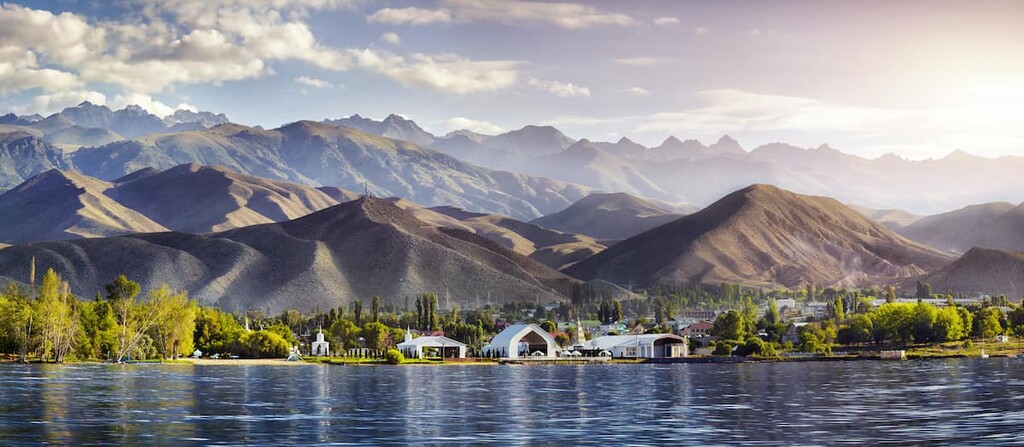
The region borders China to the north and Kazakhstan to the east and south, but there are no border crossing points in the Issyk-Kul Region itself. The main landforms of the region are concentrated in the Issyk-Kul Hollow and the framing ridges of the Tian Shan Range.
Issyk-Kul is just a small part of Kyrgyzstan, but even in this small part, there is a total of [add number] mountains with Pobedy Peak (7,439 m) being the highest and [Peak] being the most prominent (m).
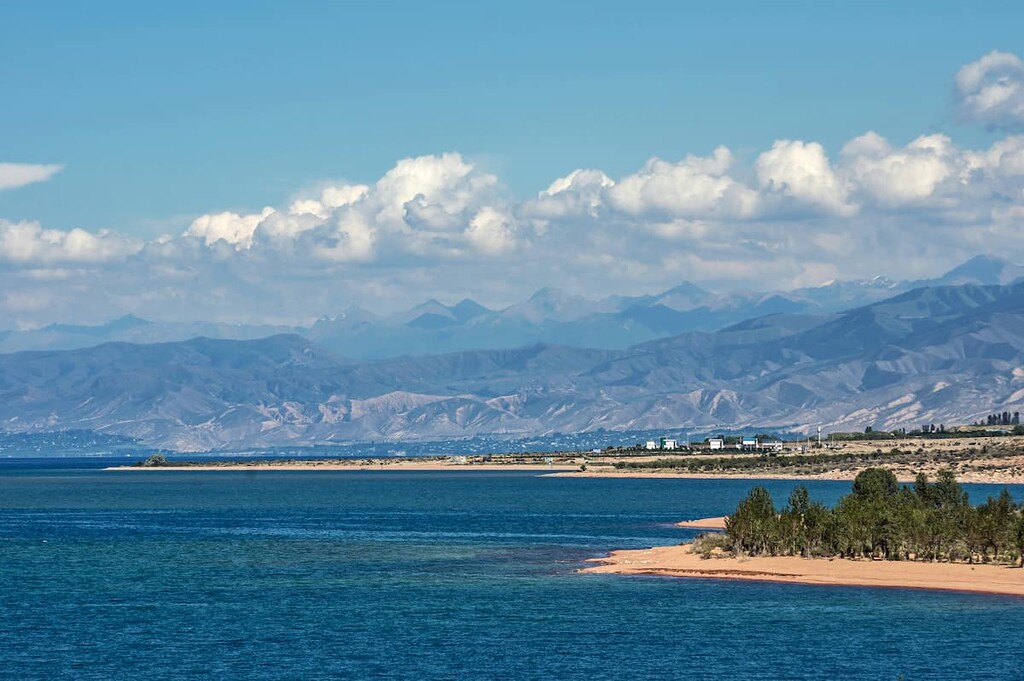
The major part of the Hollow is filled with the eye-shaped Issyk-Kul Lake. The Kyungey Ala-Too Range rises above the northern part of the basin, and the slopes of the Terskey Ala-Too Range frame the southern shore. The Central Tian Shan occupies the inland highlands of the Issyk-Kul Region. Especially distinguished among them are such ranges as the Borkoldoi, Djetim-Bel, and Kokshaaltau. It is the latter that is crowned with the famous Pobeda Peak (7,439 m), which is the highest point not only in the Issyk-Kul region, but also in the whole of Kyrgyzstan.
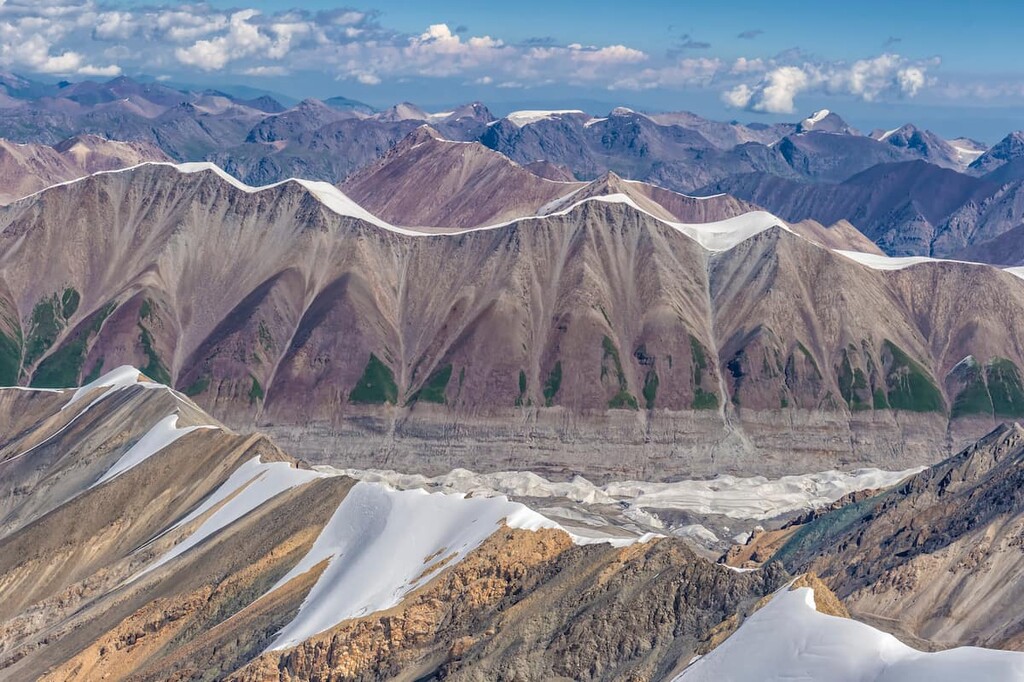
The key water resource in the region is the largest lake in Kyrgyzstan, Lake Issyk-Kul. A short glance at the map reveals several dozen rivers that flow into the lake. In reality, Issyk-Kul has about a hundred tributaries. The watershed is compact and covers the steep slopes of the Tian Shan Mountains with streams from melting glaciers rushing down to the Hollow. However, do not underestimate the underground waters which play a significant role in feeding the water resources of the Issyk-Kul basin. Firstly, they participate in feeding the rivers flowing into the lake, accounting on average for 49% of their flow, and secondly, they are directly drained by the lake.
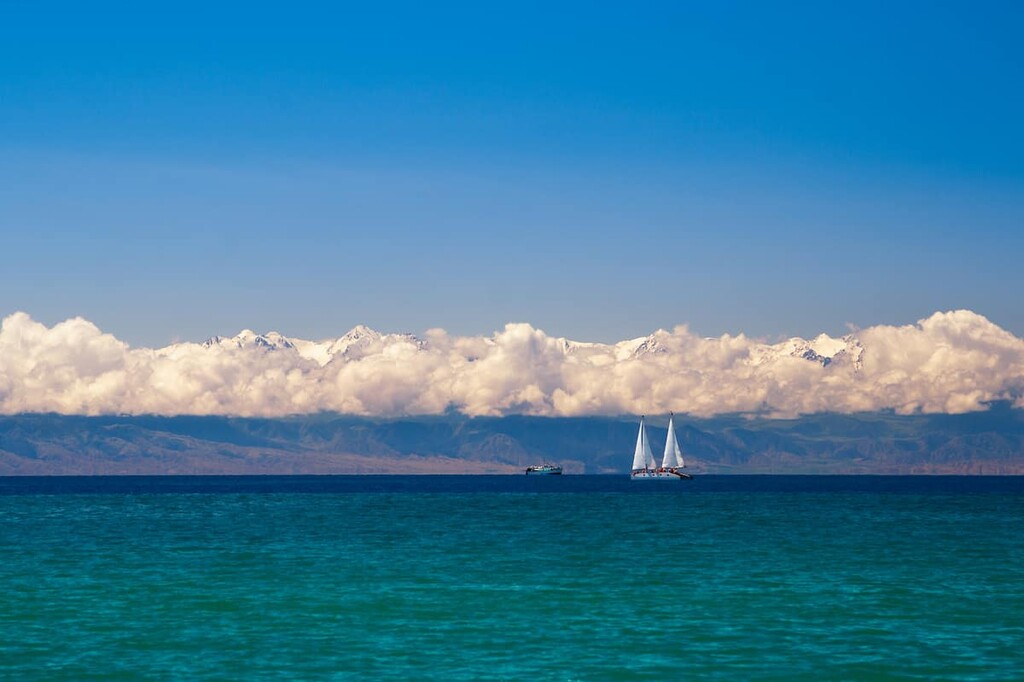
Previously, there was a common misconception that Lake Issyk-Kul had a source, the Chui River, and old maps clearly showed this point. However, modern clarifications showed that the river only skirts the Issyk-Kul basin without flowing into or out of the lake.
In addition to Lake Issyk-Kul, there are other mountain lakes in the region whose beauty will stay in your memory for many years, the most popular among them are the Ala-Kul and Teshik-Kul.

The flora of the Issyk-Kul Hollow is much richer than that of the surrounding areas of the Tian Shan. The diversity of soil, relief and climatic conditions of the Issyk-Kul Hollow contributed to this richness of vegetation. Much is contributed by the unique balance of heat and moisture in the area. The local flora features representatives of 134 families and 536 genera. Among the local plants there are 9 species included in the Red Book of the Kyrgyz Republic - the mysterious aigul flower, calamus or calamus root, elfwort (Inula helenium) and others.
Even more plants are included in the list of rare and endangered species of flora of the CIS, most of them are relict and endemic plants found only in this area. The flora varies significantly depending on the zones. Thus, the vegetation near the coast of Lake Issyk-Kul itself is rather poor, one can say semi-desert. The small creeks and gulfs are covered with charophytes and pondweed. When the groundwaters rise high and become close to the lake, mainly sea buckthorn (Hippophae rhamnoides) and reed grow.
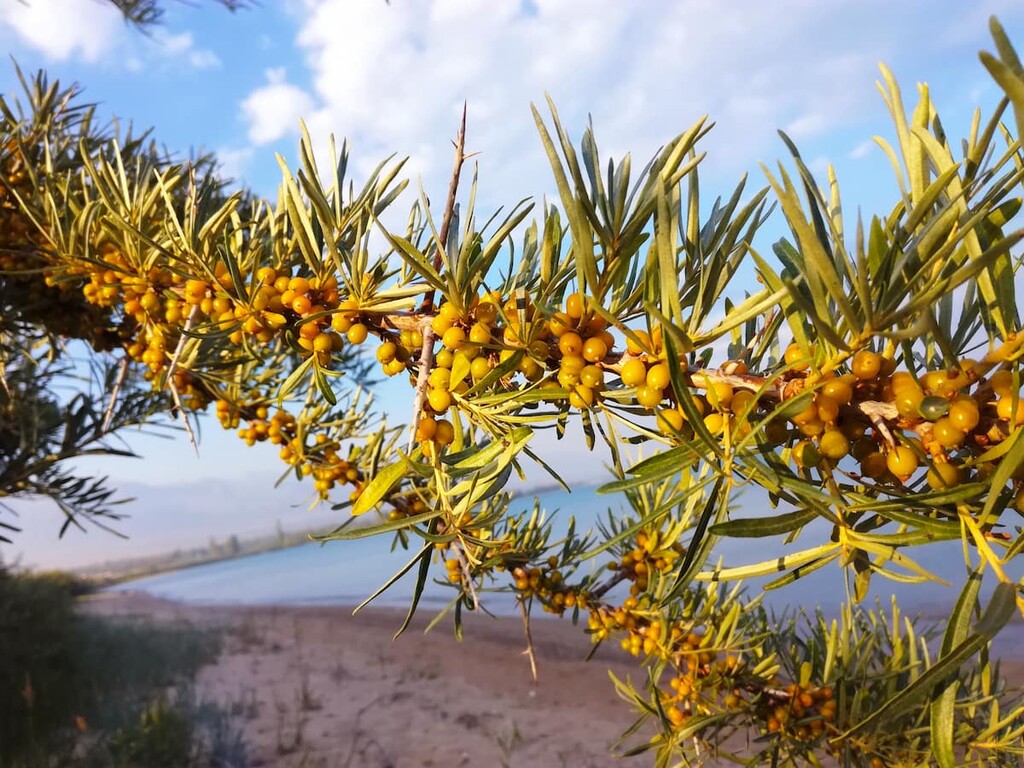
Spruce forests (mostly represented by Schrenk’s spruces) are common on the northeastern slopes of the mountains bordering Lake Issyk-Kul.
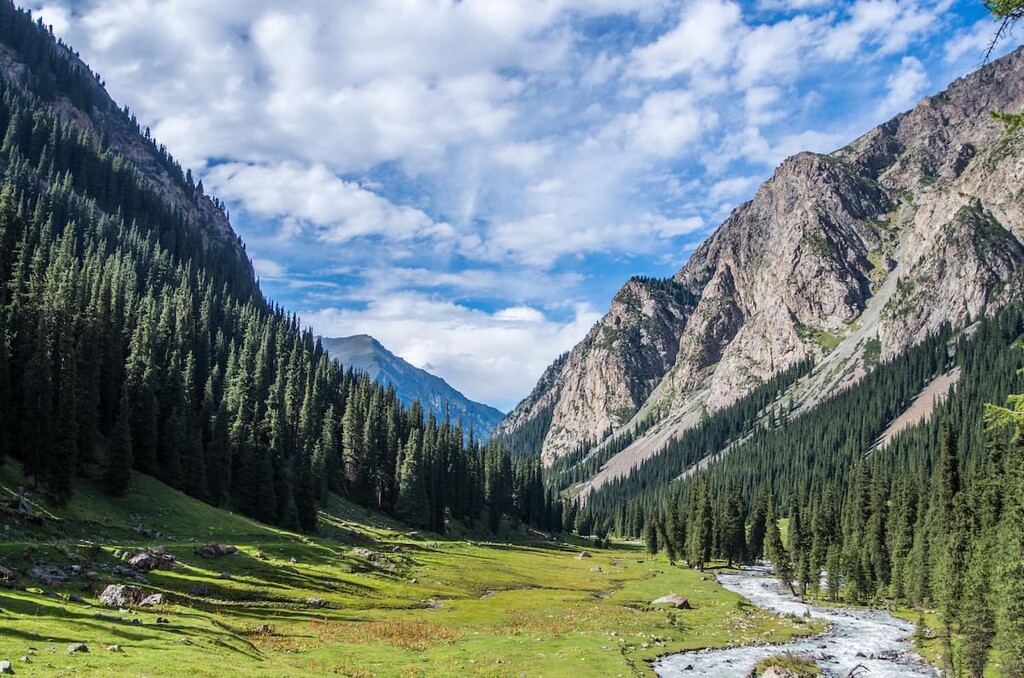
Ascending above 2,500 m, the view opens up to mountain meadows - subalpine and alpine.
The fauna of the Issyk-Kul region can boast of about 335 species of terrestrial vertebrates, 3 species of amphibians (Central Asian toad, Central Asian and lake frog), 11 species of reptiles (various lizards and water snakes, mamushi (Agkistrodon halys), sand lizard, etc.). There are 54 species of mammals, 9 of which are in the Red Book of Kyrgyzstan, 4 species are endemic of the Tian Shan, 4 species have been introduced to the region quite recently. Among the inhabitants of the mountains are Tianshan mountain sheep, maral, snow leopard, Tianshan brown bear and others.
The bird population is extremely diverse, with 267 species on the list, Issyk-Kul is a bird watcher's paradise. The west of the lake becomes a wintering ground of 20-65 thousand birds (swans, goldeneyes, mallards, coots, ducks, etc.) who come here each year. To protect birds, the Issyk-Kul nature reserve was organized in 1948. If you are lucky, high in the mountains of Kyrgyzstan you can meet a rare bird, the snowcock (mountain turkey - Tetraogallus). This is a very sensitive bird of the pheasant family, resembling a chicken but of a slightly larger size, with sharp eyesight and very subtle hearing. Researchers of the local fauna have a difficult task to try to photograph it, god bless the inventor of the camera traps that allow photo shooting without scaring the birds away. The snowcock inhabits at altitudes of 2000 - 4000 m and is considered a sacred bird in Kyrgyzstan.
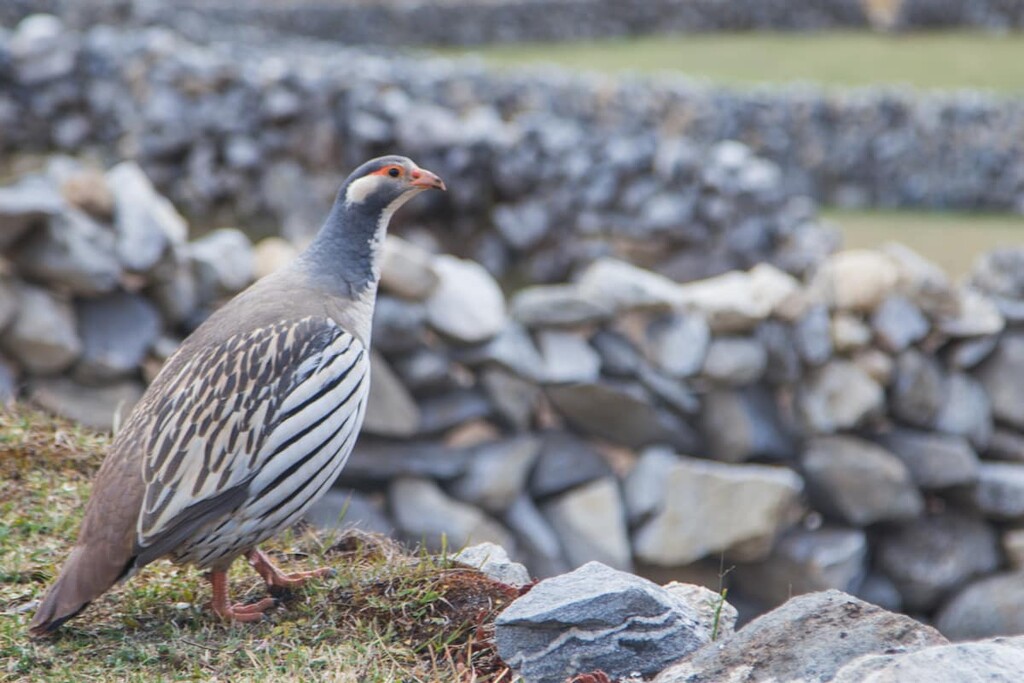
Due to its isolation, Lake Issyk-Kul has a unique ichthyofauna with a high degree of endemicity, some species are not found anywhere else. There are 21 species of fish belonging to 5 families: 14 species are endemic, the remaining were introduced from other reservoirs. The pikeperch, bream, carp, ishkhan (trout from Lake Sevan, brought from Armenia) are acclimatized. The dace (Leuciscus leuciscus) that once crossed the Chui River and entered the lake adapted to the new living conditions, it is now divided into two species: the Issyk-Kul chebak or ich (leuciscus shmidti) and the Issyk-Kul stunned fish (leuciscus bergi). About 90% of the fish in Lake Issyk-Kul are the Issyk-Kul stunned fish. It differs from the chebak by its smaller size (maximum length is 17.5 cm) and an upper mouth. In the lake it can be found throughout the coastal area. In spring, the silver salmon comes to the shore, but in the fall, when the water gets colder, it goes deeper (to 120-150 m).
The climate of the coast of Lake Issyk-Kul is subtropical with warm summers and relatively warm winters. The higher to the mountains, the more moderate continental climate you get. The average temperature of the coldest month (January) varies from -2 to -6°C (21-28F). The average temperature in July is +17°C (63F). On some days, the air can get as warm as +25 to +28°C (77-82F). In the summer months, thunderstorms are quite frequent. In June and July, there may be 9-10 thunderstorm days. Lake Issyk-Kul is so warm that the water temperature is positive even in the cold season: the average water temperature on the surface in January-February is 4.1-4.8°C (39-41F). And the ice is formed only in the bays in very cold winters. If you dive to a depth of more than 100 meters, the water temperature there throughout the year is less than 5.5°C (42F).
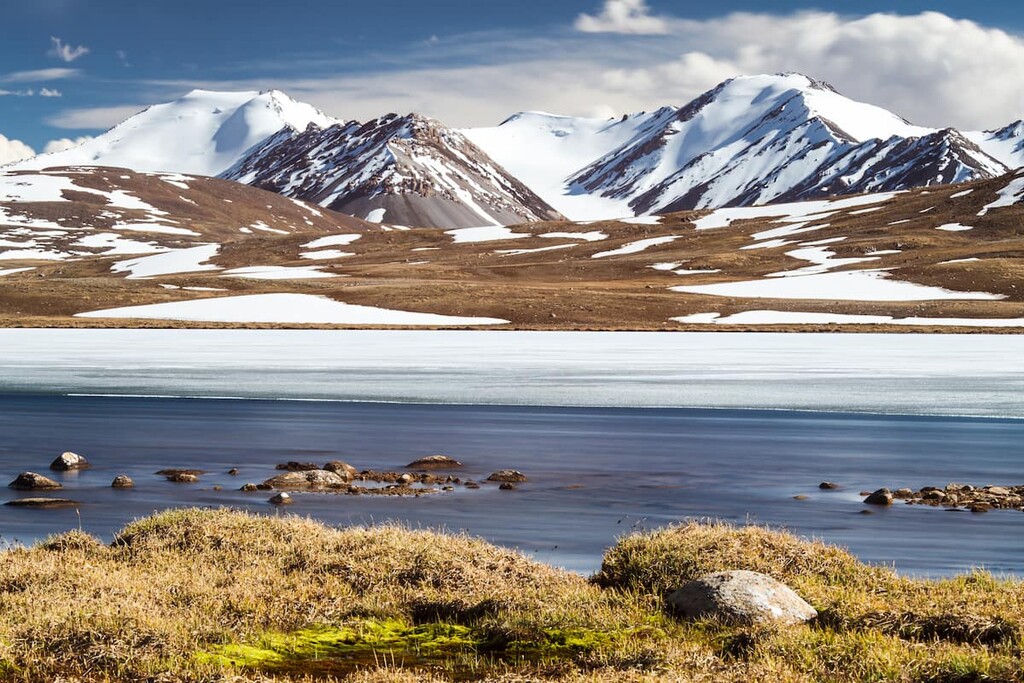
Precipitation is not frequent here, the western shore of the lake receives almost none. Almost all precipitation falls on the eastern shore. The western mountains bordering the lake receive only 115 mm of annual precipitation, while the eastern shore receives about 600 mm. But the Issyk-Kul region boasts of many sunny days, which are even more numerous here than on the Black Sea.
Local winds deserve a separate story. Legends about them have long been circulating among the locals and have been passed on from generation to generation. The character of the winds is variable. You can fall in the spell of soft breezes or mighty but warm and calm westerly winds called lances (uhlans) that blow through the Boom Gorge to the Issyk-Kul valley, making their way from the Atlantic Ocean. But sometimes a cold wind from the east challenges the warm western gust and there starts a dance of twists and turns and little tornadoes. Evening breezes blowing from the lake to the coast toward the mountains are especially strong. They are also called "mountain breezes". Strong winds, sometimes 30-40 m/s, cause sudden storms. In the middle of the lake you may see the formidable water tornadoes. The lake waves become violent, raising their waters to 3.5-4 m in height. A good many boats have been overturned by them during such periods. For travelers who dare to conquer the mountain peaks, such formidable winds are a real test of strength and endurance. Being aware of this, experienced guides accompanying tourists on mountain routes choose quieter and maximally safe routes. However, once you get to the valley, gusts of wind calm down, become gentler and kinder.
The westerly wind is more likely to bring rain, most of which falls while still in the mountains.
Issyk-Kul is a pride of Kyrgyzstan. With truly Oriental hospitality the Issyk-Kul resorts welcome guests from all over the world. The drainless salt lake is one of the 30 largest lakes in the world by area, and is also included in the list of the deepest lakes, ranking seventh in it. The lake is nestled in the Issyk-Kul Hollow at an altitude of 1,608m a.s.l. Covered on both sides by high mountain ridges, the basin is reliably protected from both the icy winds blowing from the north and from the hot, scalding breath of deserts on the south.
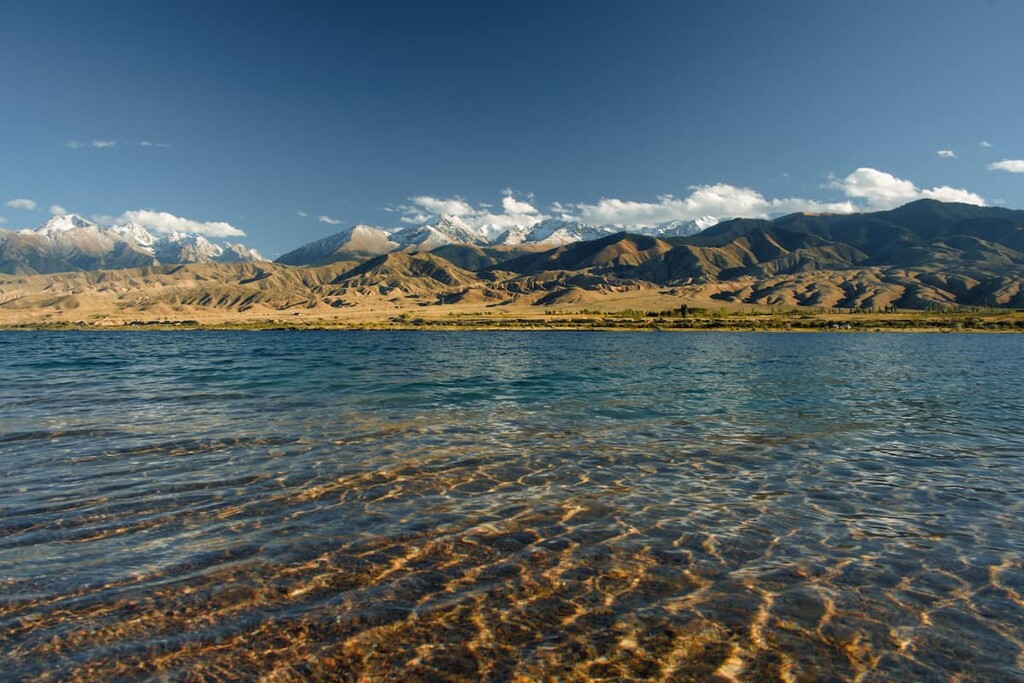
The first mention of the lake was found in the Chinese chronicles dating back to the end of the 2nd century BC. There, it is referred to as Zhe-Hai, which means ‘warm sea’. The modern name Issyk-Kul means ‘hot lake’ or ‘warm lake’. The lake doesn't freeze in winter and that's not by accident. The mild winters of the Issyk-Kul Hollow, the salinity of the lake, the heat reserves in the water mass prevent the lake from getting covered with ice even in the coldest season. Despite it being located at the junction of two plates, the ancient lake is nevertheless considered seismically safe. Due to the fact that the lake began to gradually shallow because of extensive use of its waters for irrigation, the area was placed under the protection of international environmental legislation, as a result of which its use for economic purposes was minimized.
Folk legends and lore from ancient times talk about the amazing healing power of Lake Issyk-Kul waters. The numerous studies of the composition of the water prove most of the beliefs to be true - a unique combination of salts and microelements really has a beneficial effect on the human body. Transparency of the water is another unusual phenomenon. In good weather, the visibility can reach up to 20m deep!
You can plan your vacation or trip here any time of year. This, of course, is promoted by a very mild climate with gradually blooming spring, with not too hot, comfortable summer, dry and brightly coloured in autumn, and mild and snowy winter.
In summer, many tourists tend to come here to relax on the shores of Issyk-Kul. Here you can swim in the warm water and sunbathe to your heart's content. The coastal area of the lake is famous for its health resorts, spas, hotels and vacation homes. The towns of Cholpon-Ata and Karakol and the resort villages of Bosteri, Sary-Oy, Chok-Tal, Bulan-Syoottu, Chon-Sary-Oy and Tamchy are always happy to receive guests.
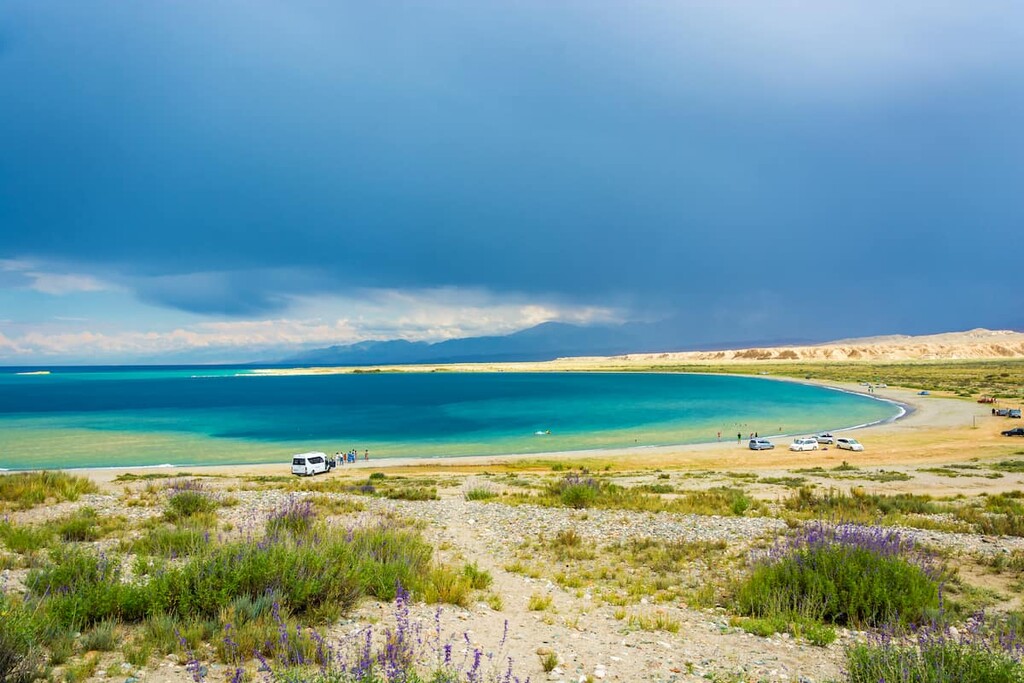
Beach lovers will find the best golden beaches in the region. They are mainly concentrated on the stretch from Tamchy village to Korumdu village on the northern shore of the lake. The beach tourism season lasts from mid-June to the end of August.
Those who appreciate the water element will love the local diving during which you can not only enjoy the beauty of the underwater world of the lake, but also feel like a real explorer. After all, the lake holds many mysteries among which are the still unsolved secrets of once flooded ancient cities.
For outdoor activities aficionados, the Issyk-Kul Region will be a feast to the eye and a source of breathtaking impressions. Fans of mountains, daring climbers and travelers often test their limits and stamina by climbing the famous Khan-Tengri and Pobeda Peak, you can also enjoy the majestic Inylchek glacier and see with your own eyes the mysteriously disappearing Lake Merzbacher. You can also go hiking or horse-riding along the picturesque gorges of the Dzhety-Oguz, Chon-Ak-Suu, Chon-Kyzyl-Suu, Semenovsky Gorge, Altyn-Arashan, etc. On your rides, you can stay in a yurt in the lavish meadows, have some curative treatment in geothermal springs, make a trip to high-altitude lakes and waterfalls (the Maiden's Tears waterfall, Tears of a Leopard waterfall, etc.).
Bokonbaevo village and Kyzyl-Tuu village will get you acquainted with the nomadic culture, whereas the petroglyphs near Cholpon-Ata and Orlenok will give an insight into the culture of the ancient people.
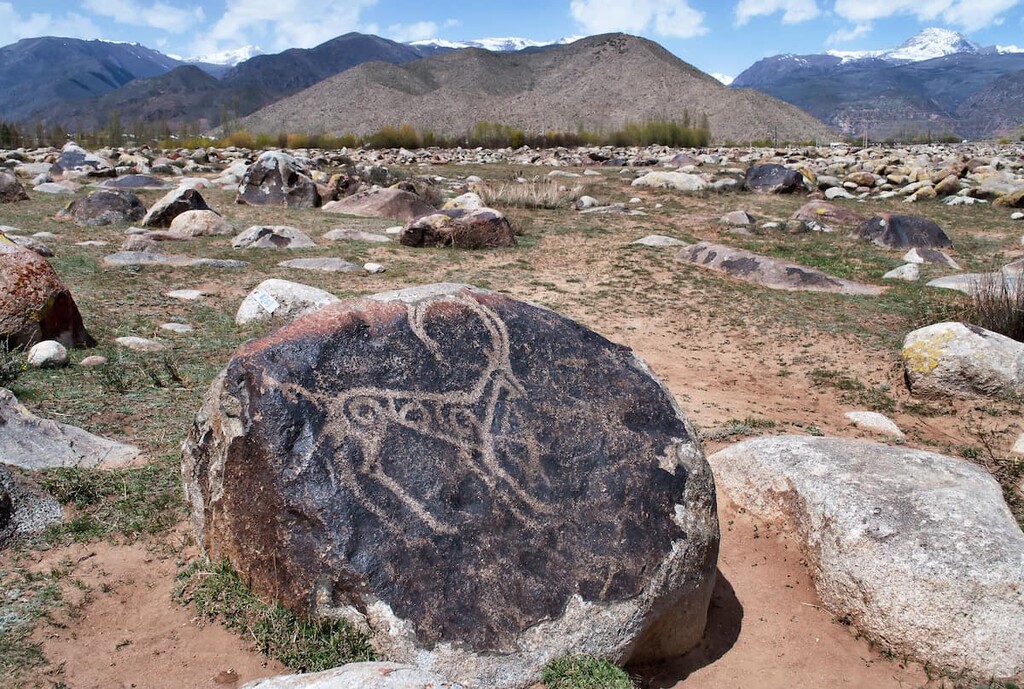
Issyk-Kul is a nice place to stay even in winter. Some resorts operate all year round on the shores of the lake. They offer water treatment and can be a perfect hub for your trips to the nearby mountains. Skiers and snowboarders will appreciate one of the best ski bases in the country located in Karakol town. You can snowshoe through the forests covered with fluffy snow and nearby gorges or get to the frozen waterfalls in the Barskoon Gorge and others.
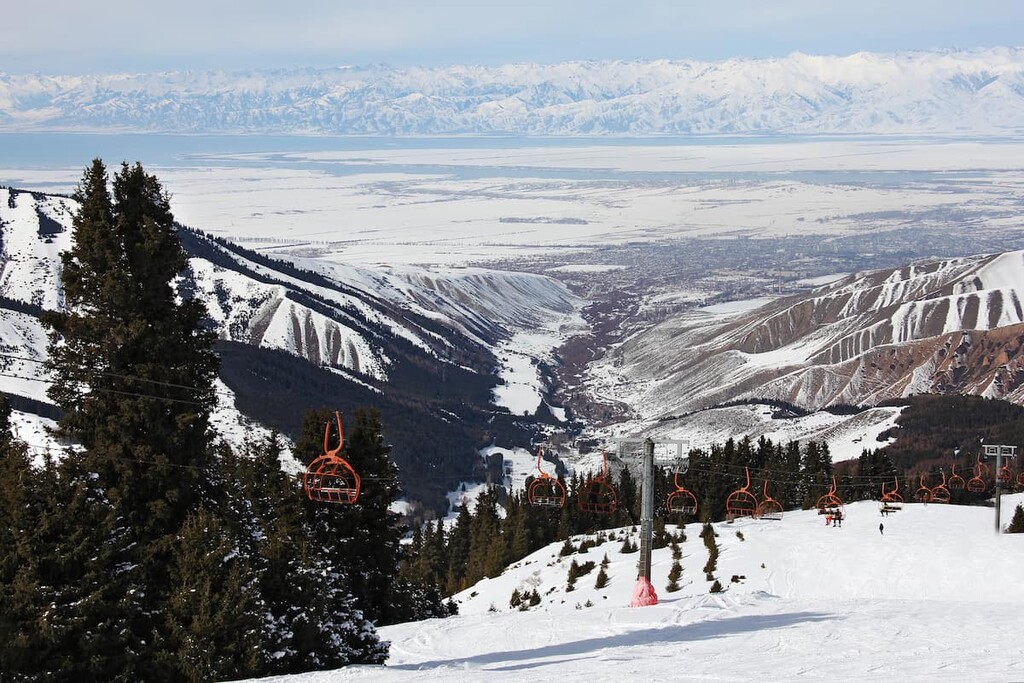
The Barskoon is one of the most beautiful gorges of the Issyk-Kul region. It is on the southern shore of the lake, approximately 140 km from the Bishkek-Karakol highway, near Tamga village. The gorge has a good road to Arable. It is famous for its dense spruce forests and cascade of picturesque waterfalls. The most popular waterfalls are the Tears of the Leopard, the Splashes of Champagne, the Manas Bowl and the Ak-Sakala Beard.
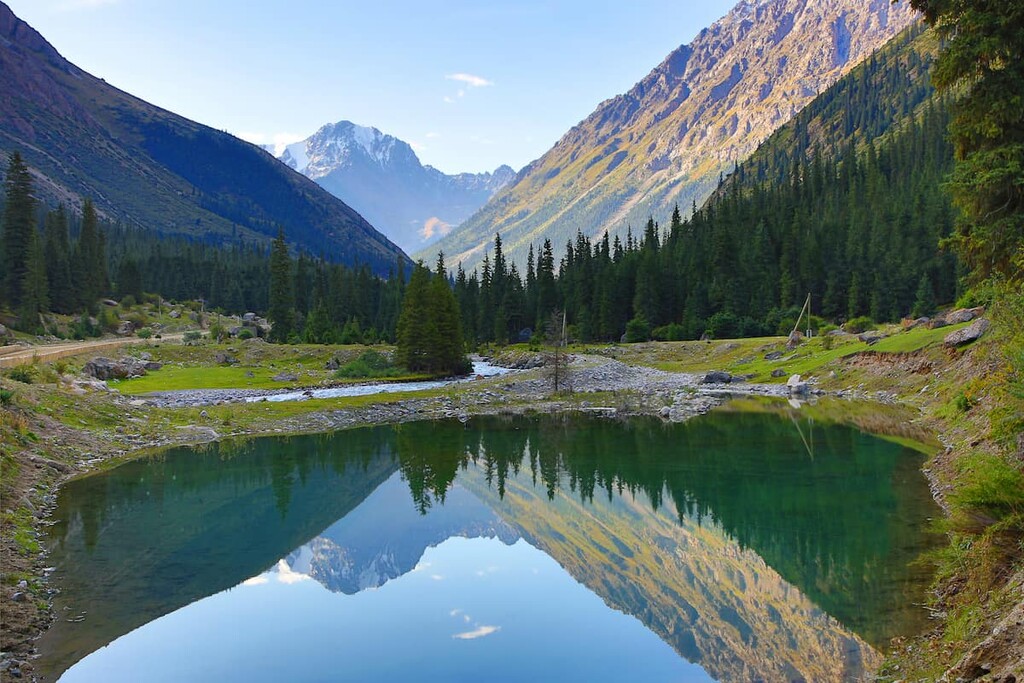
The gorge stretches for 30 kilometers, going deep into the mountains of the Terskey Ala-Too Range and reaching up to the high plateau of Arabel. The height of passes in the gorge is enormous and in some places reaches 4,000 meters.
By the way, the biggest gold mine in Kyrgyzstan, the Kumtor mine, is located right here.
Besides natural beauties, there are also cultural sights: the ancient headquarters of Tagai-Biya or as it is also called, Mohammed-Kyrgyz, one of the founders of Kyrgyz statehood, and a monument to Yuri Gagarin, the first man who flew to space. Yuri Gagarin visited these places and the canyon itself.
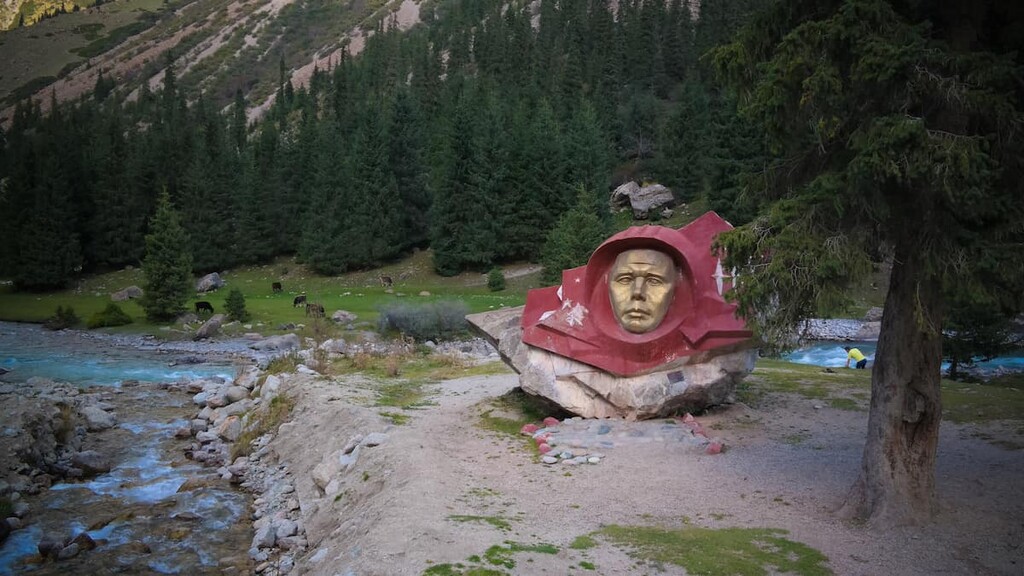
The highest point of the Tian Shan and Kyrgyzstan is Pobeda / Pobedy Peak aka Victory Peak (7,439 m) located on the Kakshaal-Too Range bordering China. There are actually three peaks: Peak Pobedy Main, Peak Pobedy West and Peak Nehru. Only the Peak Pobedy Main is a seven-thousander, the others are slightly under 7,000. The main is the northernmost of the seven-thousanders and one of the most difficult peaks to conquer. The history of the peak is dramatic, it claimed lives of many experienced climbers. At the same time, Peak Pobedy history is full of heroism and discoveries.
The mountain is quite unapproachable if not to say hostile, with capricious character. Not every traveler makes it to the summit. The slopes are abundant with sudden cracks and the valleys and passes are subject to sudden violent icy winds. Temperatures can reach -30°C (-22F) during the ascent.
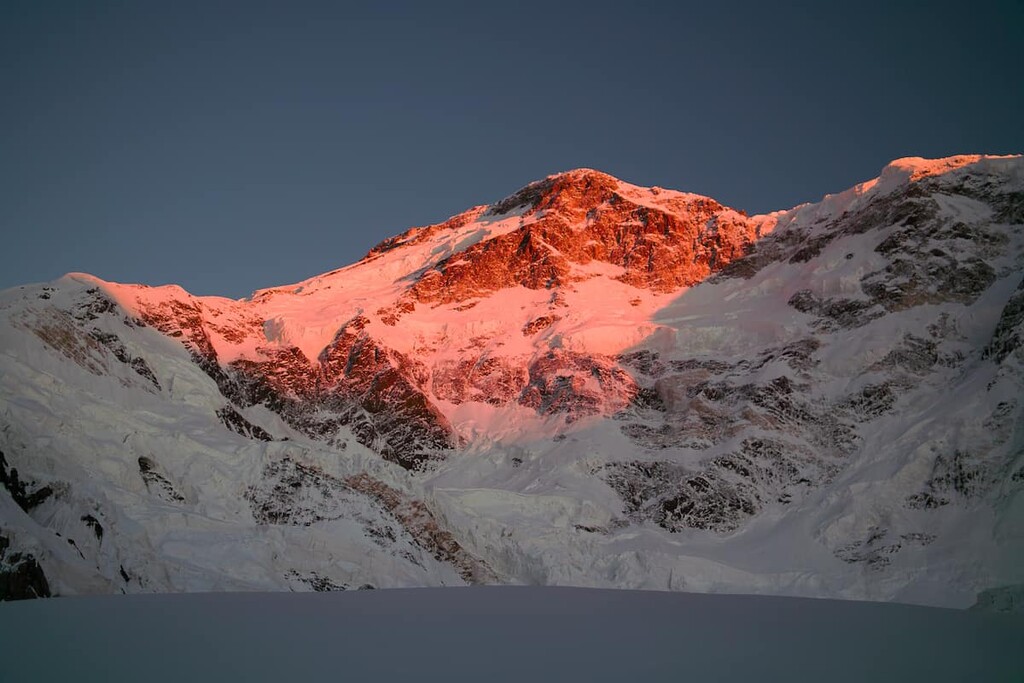
The southern slope (from the Chinese side) is considered the easiest in terms of relief and weather conditions. It was the first to be conquered. Only 20 years later Abalakov's group was able to ascend the peak from the northern side.
Despite the fact that the ascent to this haughty peak is considered one of the most difficult and dangerous, professional and amateur climbers continue to come here in quest of adventure and a true power test. Nowadays the routes to the mountain have become less risky than before. After all, there is modern reliable equipment and gear, rescuers are ready to move quickly to help, and route maps are quite adequate. Nevertheless, the mountain continues to test those who dare to conquer it, and each ascent is a real feat, that is why make sure you prepare properly and climb the peak with a well-coordinated team.
About 120 kilometers from Balykchy, near Tosor village, on the southern shore of Issyk-Kul is a real fairy tale. That is the name of the small gorge famous for its red rocks that look as if they were molded by wizards from the clay. The canyon is frequently visited by tourists due to its easy accessibility and because of the incredible scenery.
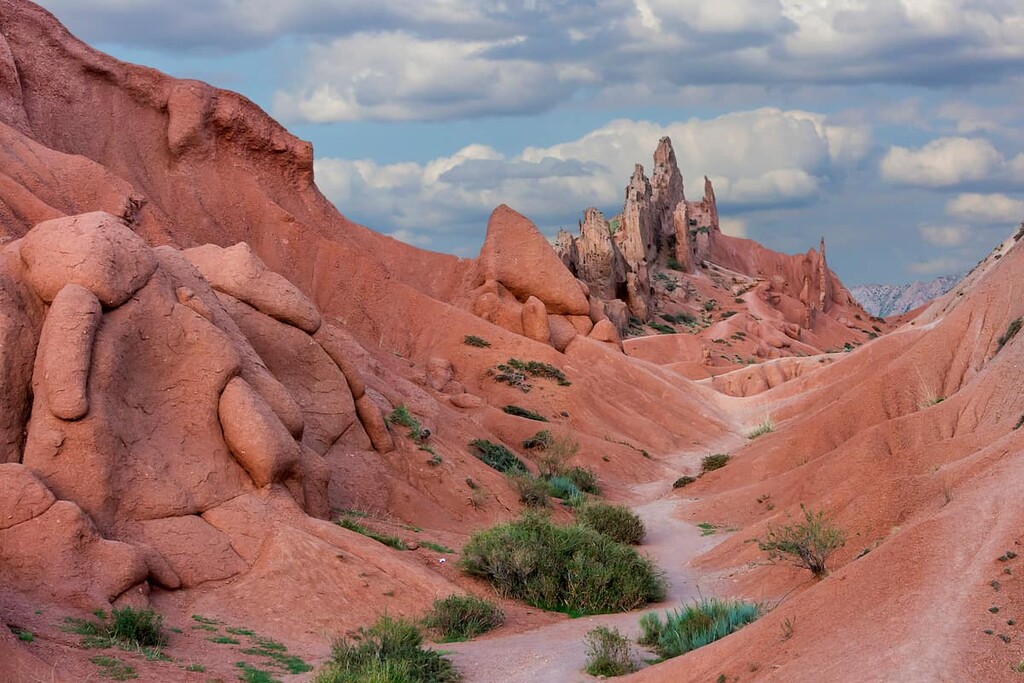
Just 7-15 km away from Karakol, there is a picturesque Karakol Gorge. In summer, you can enjoy the beauty of the surrounding nature and drink mare's milk or koumiss in the local yurts.
On the left bank of the Karakol Gorge before the left tributary of the Karakol river, there are low passes through which you can make a fascinating journey to the upper reaches of the picturesque Yrdyk Gorge. You can visit the foothills of Issyk-Kul Feathers Peak and Vostok Peak (3,500 m), and seven moraine-glacial lakes at the source of the river Karakol.
The right side of the Karakol Gorge is formed by Przewalski Peak (4,283 m), 40 Years of Kyrgyzstan Peak (4,300 m) and others. Through the Ala-Kol Pass you can get to the middle part of the forested Arashan Gorge, visit the two-headed Issyk-Kul Crest Peak where you can admire the surrounding mountains and the majestic panorama of Lake Issyk-Kul.
There are also waterfall cascades, moraine-glacial Lake Ala-Kel located at an altitude of 3,532 m and Karakol Lake at the glacier tongue in the On-Tor Gorge. In the upper reaches of the Karakol River there is a small area where you will find peaks reaching 5000 m.
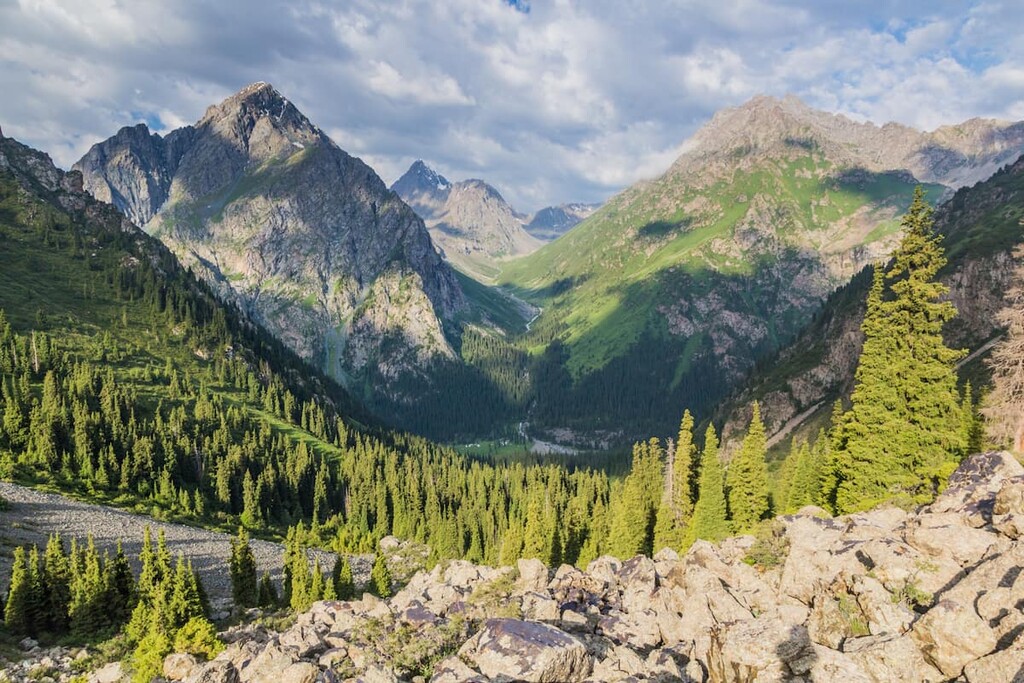
Karakol Peak (5,271 m) is only 40 km from Karakol, it offers fantastic climbing routes of varying difficulty levels.
Karakol Peak is not the only summit in the vicinity of Karakol town. There are many other interesting summits to conquer.
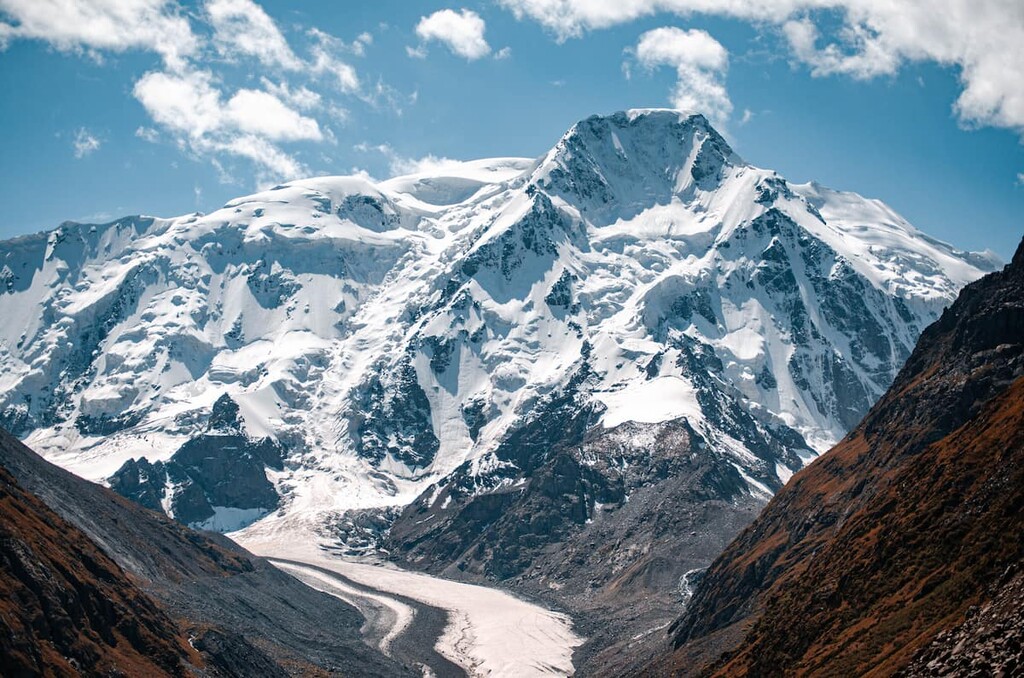
Dzhigit Peak has the most difficult and interesting routes of the area, there is a lot of snow and ice, Large altitude differences at Karakol Peak and Dzhigit Peak make them similar to the seven thousanders.
Travelling in Central Asia is not something you plan in haste. It is better to prepare for the trip to Lake Issyk-Kul in advance, especially if you are supposed to stay in a sanatorium or at a tourist center. You can reach Issyk-Kul from major cities of Russia, from Uzbekistan (Tashkent) and directly from Kyrgyzstan ( Bishkek). You can take a plane, train, bus or car.
The most frequent route to the lake resorts is from Bishkek - by cab, by shuttle bus or bus, by your own or rented car. On average, the road through the Boom Gorge is about 260 kilometers. In summer, you can also take a train which travels to Balykchy, the route thuswise shortens to about 180 km.
The Issyk-Kul international airport is located near Tamchy village.
Administratively, the region was first formed on November 21, 1939, only to be abolished during WW2 times and re-created on December 11, 1970. The capital of the region was moved several times to different cities, but eventually Karakol was chosen as its administrative center. The region takes its name from the second largest lake in the world, Issyk-Kul.
The largest settlements of the region are at the same time the resort centers of the Issyk-Kul Region - the cities of Karakol, Cholpon-Ata and Balykchi (Balykchy). The region, which covers an area of 43,100 sq. km, has a population of 496,000 (as of 2020), most of which is concentrated and lives around Lake Issyk-Kul.
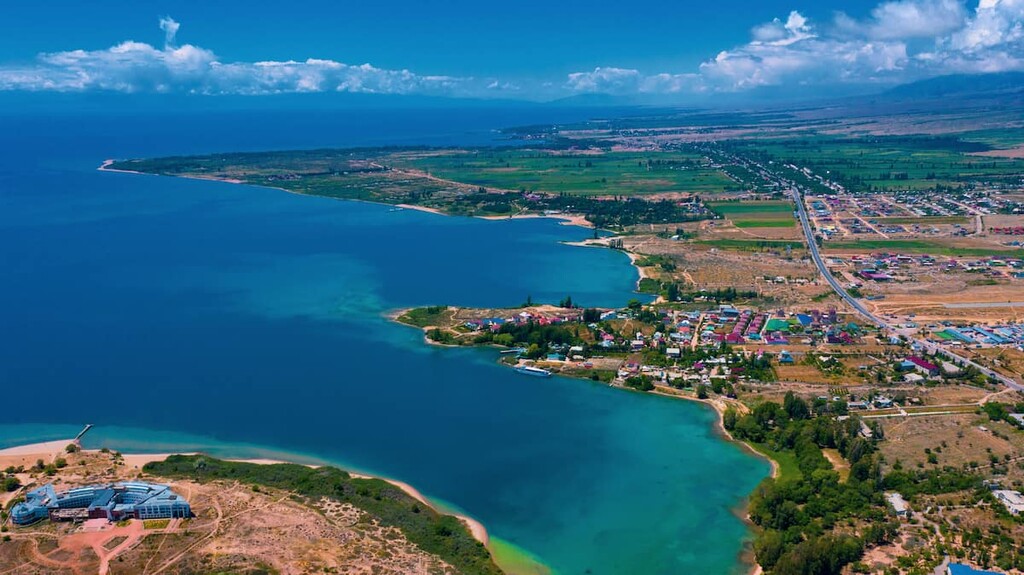
Once upon a time there was an isolated Russian military outpost. It had been a god-forsaken fortress up to the mid 19th century, when explorers arrived here to map the unknown peaks and valleys separating Karakol from China. That made the small settlement famous and triggered its fast development as wealthy merchants and artisans began flocking here. Their one or two-story houses with fanciful tiles can still be seen in Karakol. Later, the population of the town was reinforced by Chinese Muslims who fled here from persecution by the Dungans. To this day Karakol is still home to a large Dungan community.
The name Karakol means ‘Black Hand’ in Kyrgyz language. There is speculation that it is associated with the colour of the hands of the city's earliest settlers - Russian farmers. The city has been renamed into Przhevalsk several times, in honor of the Russian geographer and explorer Nikolai Mikhailovich Przhevalsky. On the site of his house in Mikhailovka Bay is now a museum and a garden.
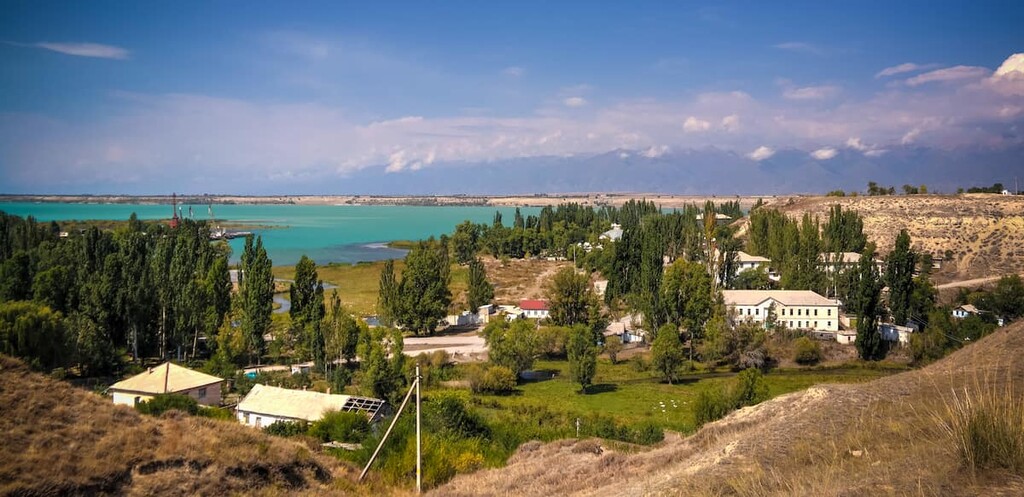
Karakol is located very close to the Terskey Ala-Too Range, just five kilometers from it. For tourists, the town offers a variety of climbing, trekking, skiing, horseback riding, and hiking opportunities.
If you are in Karakol, you should definitely visit the Altyn-Arashan hot springs. You will get unforgettable sensations when dipping into the hot water after the long and hard descent from the Ala-Kul Pass.
Among the architectural beauties is the Holy Trinity Cathedral - a classic example of the Russian Orthodox Church of the late nineteenth century.
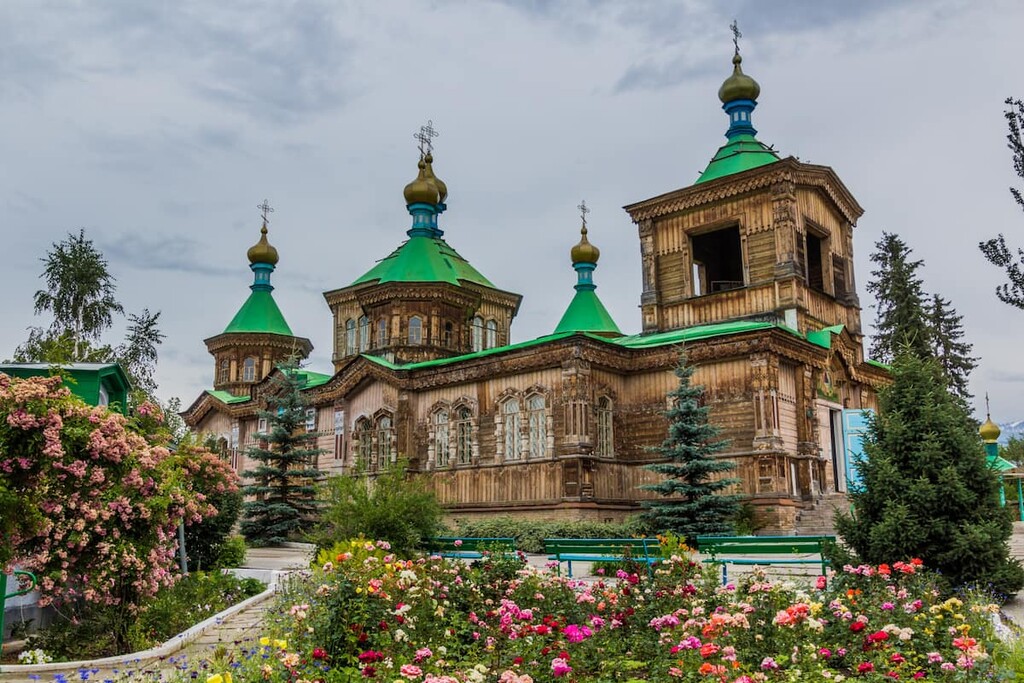
Another gem is the Dungan Mosque built by a Chinese architect and craftsmen in the early twentieth century. It is made from wood without a single nail. The architectural design and paintings inside are adorable.
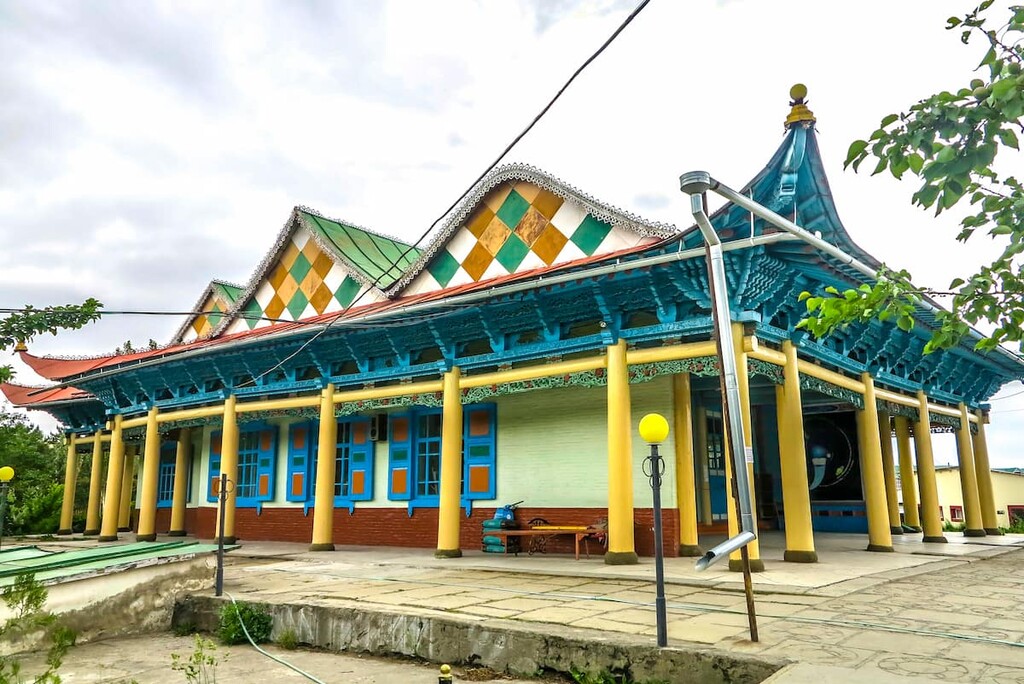
The City Museum will help you experience the atmosphere of Karakol - there are exhibitions about the early Russian settlers, Kyrgyz national culture, music, art, as well as the flora and fauna of the region, history and archaeology.
Explore Issyk-Kul with the PeakVisor 3D Map and identify its summits.








ultra
snow-leopard-award
china-ultras
kyrgyzstan-ultras
ultra
snow-leopard-award
china-ultras
kyrgyzstan-ultras
kazakhstan-ultras
ultra
snow-leopard-award
china-ultras
kyrgyzstan-ultras
ultra
snow-leopard-award
china-ultras
kyrgyzstan-ultras
kazakhstan-ultras
